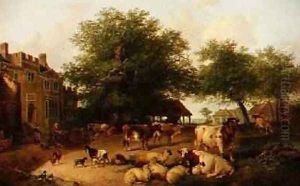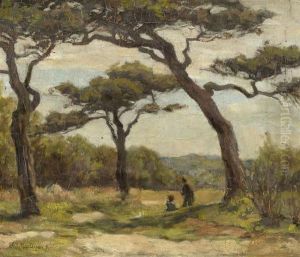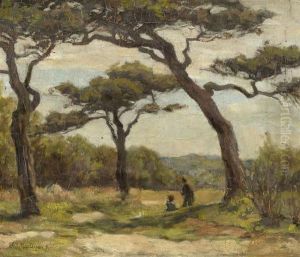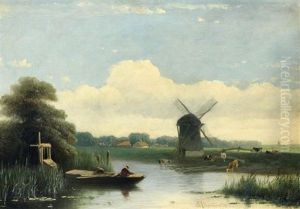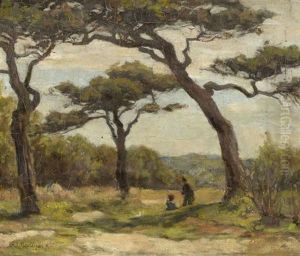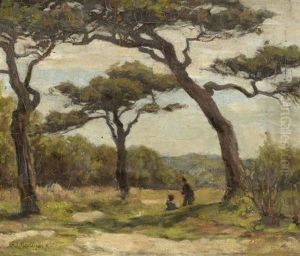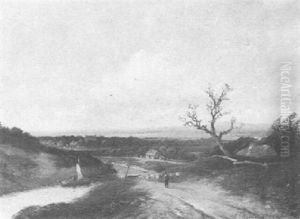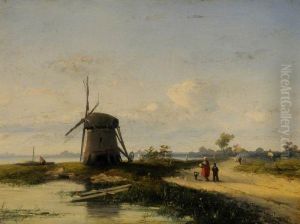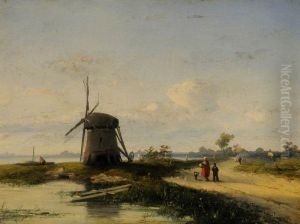Antonius Josephus Madlener Paintings
Antonius Josephus 'Antoon' Madlener was a Dutch artist known for his painting, drawing, and decorative arts. Born on February 19, 1870, in Arnhem, the Netherlands, Madlener began his artistic journey at a young age and developed a versatile style throughout his career. Although not as widely recognized as some of his contemporaries, Madlener contributed to the Dutch art scene with his distinctive approach to art-nouveau and symbolism.
Madlener studied at the School of Applied Arts in Amsterdam, which was known for fostering a new generation of artists who blended traditional techniques with emerging modernist sensibilities. His works often featured floral motifs, intricate patterns, and an attention to detail that was typical of the art-nouveau movement. Madlener’s artistic output was diverse, ranging from paintings and drawings to designs for book covers and decorative objects.
During his lifetime, Madlener experienced the transition from the 19th century into the 20th, a period marked by significant changes in the world of art. He navigated these changes by incorporating the influences he encountered and by adapting his style accordingly. Despite the overshadowing fame of artists like Vincent van Gogh and Piet Mondrian during this period in Dutch art history, Madlener managed to maintain a steady career.
Madlener's works were exhibited in various venues, including the Stedelijk Museum in Amsterdam, and he participated in numerous exhibitions that helped to disseminate his artworks to a broader audience. In addition to his visual art, he was also known for his set designs for theater productions, showcasing his versatility and creative vision beyond the canvas.
Antonius Josephus Madlener passed away on November 14, 1947, in Blaricum, the Netherlands. While he may not be a household name, his contributions to the Dutch art-nouveau movement remain a part of the rich tapestry of European art history. His works continue to be appreciated by art enthusiasts and collectors who are drawn to the elegance and decorative qualities of the art-nouveau period.
